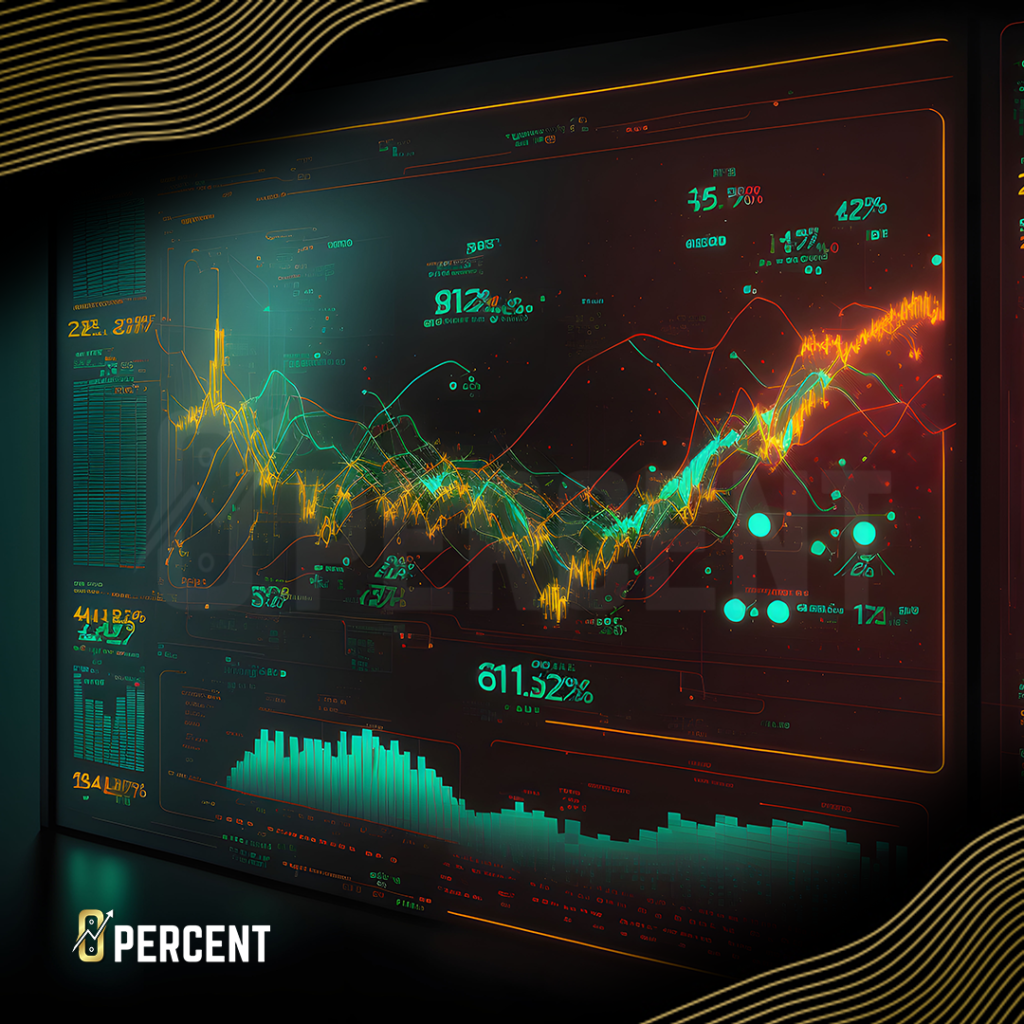
Jeff Sekinger
Jeff Sekinger Founder & CEO, 0 Percent Who is Jeff Sekinger? Visionary Trailblazer Sekinger has been in the financial industry for over a decade. Starting
An exchange traded fund, or ETF, is a type of investment product that tracks the performance of an underlying asset, index or commodity. ETFs are becoming increasingly popular due to their relatively low fees, ease of trading, as well as broad exposure to a multitude of asset classes.

There are several different types of ETFs, each with their own unique investment strategy and objectives. Some of the most common types of ETFs include:
These are just some of the most common types of ETFs available to investors. Each ETF has its own unique set of investment strategies and objectives. It is important for investors to carefully consider their investment goals and risk tolerance before investing in any particular ETF.
Spot ETFs
Spot ETFs are a type of ETF that invests in the underlying asset of a specific market. These assets could be stocks, bonds, or commodities. The spot ETF tracks the actual market price of those assets without using derivatives or futures contracts. Spot ETFs allow investors to easily buy and sell shares on an exchange.
Take, for example, a spot ETF that invests in gold. The spot ETF would buy physical gold at the current market price and hold it. The ETF would then issue shares to investors based on the value of the gold held. Investors can then buy or sell these shares on an exchange, with the share price reflecting the current market value of the underlying commodity.
Spot ETFs afford the investor a relatively low cost, transparent and convenient way to gain exposure to a wide variety of markets and assets. Spot ETFs can also diversify an investor’s portfolio. However, it should be noted that like any other investment, spot ETFs carry risks, so investors should carefully consider their investment objectives and risk tolerance prior to investing.
Bitcoin
You might be thinking “what does Bitcoin have to do with ETFs?” The answer: a lot. Bitcoin, while technically not the world’s first cryptocurrency, is the world’s first cryptocurrency built on a blockchain. Bitcoin operates on a peer-to-peer network and allows individuals and businesses to transact without centralized intermediaries like banks or payment processors. Over the course of more than a decade, Bitcoin has become a global phenomenon, known for its infamous volatility and high risk. More recently, spot ETFs are being utilized via the cryptocurrency, known as spot Bitcoin ETF.
What is a Spot Bitcoin ETF?
A spot Bitcoin ETF is an ETF that holds Bitcoin as the underlying asset. The ETF tracks the price of Bitcoin and allows investors to buy or sell shares of the ETF on the stock exchange. These ETFs can be exchanged on a stock exchange just as they would with traditional ETFs.
There are several benefits and challenges to using spot Bitcoin ETFs. Here is a list of a few of those advantages and challenges.
Benefits of a Spot Bitcoin ETF
Utilizing spot Bitcoin ETFs offer several benefits to investors, as well as to the cryptocurrency market overall. Some of these benefits include:
Challenges to the Creation of a Spot Bitcoin ETF
Despite the potential benefits of a spot Bitcoin ETF, several challenges remain. One of the most significant challenges is regulatory approval, as regulators have been cautious about approving Bitcoin-based financial products due to concerns about market manipulation and lack of transparency. The US Securities and Exchange Commission (SEC) has rejected numerous Bitcoin ETF proposals in the past. The SEC cites concerns surrounding market volatility and the potential for fraud.
Another paint point for spot Bitcoin ETFs is Bitcoin’s custody. Holding large amounts of Bitcoin requires novel security measures to protect against theft or hacking. Novel custodial solutions would need to be secure and audited regularly to ensure integrity.
Algorithmic Trading Bots and Spot Bitcoin ETF
Algorithmic trading bots are automated trading programs that leverage the power of artificial intelligence and machine learning to analyze market data and execute trades based on specified criteria. Algorithmic trading bots, or algo bots have become increasingly popular recently, both in crypto markets and in traditional exchanges.Algo bots, while not perfect and still subject to risk, offer many significant potential benefits to investors, for example their ability to operate continuously, and their ability to analyze vast amounts of data with precision and speed.
A spot Bitcoin ETF could be an attractive investment for algo bots, as it offers several benefits over traditional cryptocurrency exchanges. The ETF structure provides a more regulated and secure environment for trading, reducing the risk for fraud and hacking. The ETF structure would also provide greater liquidity and off-exchange access to Bitcoin. However, Algo bots can execute trades at relatively high volumes and speeds, raising concern from regulators
The intersection of algo bots and the trading of a spot Bitcoin ETF could provide benefits in terms of efficiency and accuracy, but it also presents challenges in terms of potential market manipulation and volatility. Regulators and ETF providers will need to carefully monitor and regulate the use of bots to ensure the integrity and stability of the market.
Potential
A spot Bitcoin ETF has the potential to bring several benefits to the cryptocurrency market and investors alike, including more regulatory oversight, greater liquidity, reduced entry barriers — both actual and psychological — and potentially mitigate security risks. However, several challenges remain in its creation, including regulatory approval and the handling of the custody of Bitcoin. Should these challenges be correctly addressed, a spot Bitcoin ETF could provide a reliable and accessible way for investors to gain exposure to Bitcoin and other cryptocurrencies, while simultaneously increasing mainstream acceptance of this emerging digital asset class.
What is a Futures-Based ETF?
Similar in structure to the aforementioned ETfs, a futures-based ETF, also known as a commodity-based ETF, is an investment product that tracks the performance of a futures contract or a basket of futures contracts on a particular commodity or asset. As a commodity, the underlying asset could be anything from gold, oil, natural gas, or even currencies. The ETF holds a portfolio of futures contracts that are designed to mimic the price movements of the underlying asset. Investors can exchange shares of the ETF on a stock exchange, just like they would with traditional ETFs or spot Bitcoin ETFs.
How Do Futures-Based ETFs Work?
To understand how a futures-based ETF works, one must understand how futures contracts work. A futures contract is the agreement to exchange an asset at a specified price and future date. Futures contracts are traded on futures exchanges and are used by market participants to manage price risk or speculate on future price movements. For example, an oil producer might sell a futures contract to lock in a price for oil delivery in six months, while a trader might buy a futures contract to speculate on rising oil prices.
Benefits of a Futures-Based ETF
Futures-based ETFs afford numerous potential benefits to investors Some of the potential benefits include:
Challenges of Futures-Based ETFs
While futures-based ETFs offer many benefits, they also present several challenges, including:
Futures-based ETFs offer beginner and seasoned investors alike a relatively easy and cost-effective way to gain exposure to commodities and other assets. Like all investment options, they come with their own distinct set of advantages, disadvantages and risks. Investors should carefully consider these factors and consult with a financial advisor before investing in a futures-based ETF. Additionally, investors should be aware of the risks associated with the underlying commodity or asset, such as supply and demand factors, geopolitical risks, and price volatility.
Comparing Spot Bitcoin ETFs and Futures Based ETFs
A spot Bitcoin ETF is different from a futures-based ETF, which tracks the price of Bitcoin futures contracts as opposed to holding the asset. Futures-based ETFs are more complex and carry higher risks due to the potential for price discrepancies between the futures market and the spot market, especially in highly volatile markets like Bitcoin.
Here is an overview of some key differences between spot Bitcoin ETFs and futures-based ETFs:
Spot Bitcoin ETFs and Futures-Based ETFs offer investors exposure to the price of Bitcoin, but they have different underlying assets, investment strategies, price movements, liquidity, complexity, and fees. They both carry risk and investors should have a good understanding of ETFs before including them in their investment strategy.

Jeff Sekinger Founder & CEO, 0 Percent Who is Jeff Sekinger? Visionary Trailblazer Sekinger has been in the financial industry for over a decade. Starting

Angel Alvarez Funding, 0 Percent Who is Angel Alvarez? From SpaceX to 0 Percent Angel is a remarkably well rounded individual who has had a

Abhay AnandProduct, 0 Percent Who is Abhay Anand? Title One Test Title Two Test Test
Sign up for our newsletter to stay in the loop.
Sign up to receive news & updates!
Sign up to receive news & updates!